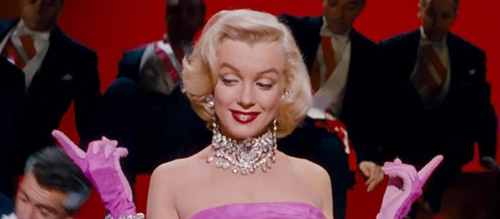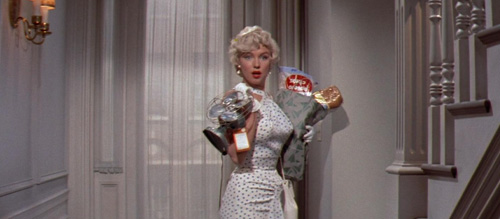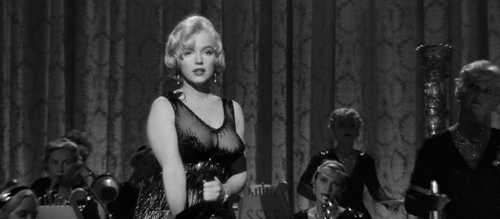Marilyn Monroe: 3 Career-Defining Performances
Marilyn Monroe is more than just a star of the past, she is a timeless legend. Since her sudden death in 1962, her life has been mythologized as the tragic blonde bombshell who was broken by the Hollywood system and gossip machines that made her. Though she worked tirelessly to become a great performer, arguably many fans today recognize her only as an image in a white dress standing over a grate, seductively singing “Happy Birthday” to the president, or etched in Technicolor on Andy Warhol’s canvas.
Beneath these enduring images, however, was a dedicated, intelligent, kind woman who struggled to find peace under the microscope. And still, despite unrelenting attention and criticism, her performances exude a confidence and unpretentious grace that winks at the audience and makes complicated women feel seen. What is so particularly endearing, and perhaps part of the reason for her lasting popularity, is the humanity beneath the Hollywood glamour. As Monroe’s life story resurfaces time and time again, let’s get reacquainted with the woman behind the image.
Here are Marilyn Monroe’s three career-defining performances that cemented her pop culture legacy and allowed her to share her own voice.
Follow @thefilmagazine on Twitter.
1. Gentlemen Prefer Blondes (1953)

This musical-comedy follows best friends and showgirls Lorelei (Marilyn Monroe) and Dorothy (Jane Russell) as they board an ocean liner for France where Lorelei will marry her wealthy fiancé, Gus.
Early on in Gentlemen Prefer Blondes, the women are set up as binary opposites with Monroe’s Lorelei as the stereotypical “dumb blonde” chasing men with money while Dorothy, the sensible brunette, prefers men for their looks and for love. They face many obstacles along the way from being followed by a private detective named Ernie (who is hired by Gus’s father to spy on them), to getting mistakenly arrested for stealing a tiara belonging to the wife of a flirtatious diamond mine owner onboard the ship. In the end, however, both women get exactly what they want: Dorothy marries Ernie for love and Lorelei marries Gus for his money.
On the surface, the film promotes a conservative ideal where a woman’s happy ending is determined by holy matrimony. However, Monroe’s star-making performance as the gold-digging Lorelei upends this superficial reading as she reveals near the end of the film that her “dumb blonde” persona is itself a performance. In a clever scene between Lorelei and Gus’s father, she reveals that she can be “smart when it’s important, but most men don’t like it,” and that marrying for money is shrewd when women have so few options. Monroe is rumoured to have suggested the line herself.
Therein lies the true genius of her performance, since it is as though she is speaking directly to each of us through Lorelei, and that her “Marilyn Monroe” persona is also a performance that gives her some power, however limited. Therefore, when Lorelei/Monroe takes the stage in “Diamonds Are a Girl’s Best Friend” to sing about women’s financial freedom, it is a striking moment of self-empowerment that has transformed her into a modern feminist icon.
2. The Seven Year Itch (1955)

With her sex symbol status solidified, Marilyn Monroe went on to star in her first film with director Billy Wilder as a doe-eyed commercial actress who moves into the New York apartment above a married book publisher, Richard (Tom Ewell). While Richard’s wife and son are in Maine for the summer, he learns of a phenomenon in which men lose interest in their wives after seven years of marriage and he begins to fantasize about his upstairs neighbour. After many gags and flirtatious misunderstandings – including the legendary scene where Monroe steps on a subway grate, sending her white skirt flying – Richard realizes his love for his wife and joins his family in Maine.
Unlike Gentlemen Prefer Blondes, The Seven Year Itch provides Monroe few opportunities to express female empowerment and assert herself. Her character embodies Richard’s fantasies as an object of his desire and she is even denied a name, being credited as The Girl. Underneath the gags, however, viewers are invited to read camp in Monroe’s performance as she cheekily plays the naïve actress who genuinely believes in the good in everyone, even the Creature from the Black Lagoon. We are rewarded for being in the know about her “blonde bombshell” persona.
Wilder is clever when, in one minute, he depicts Richard’s femme fatale fantasy of The Girl in a tiger-print gown swooning over his musical talents and, in the next, has the real Girl enter his apartment in pink pyjamas. We end up laughing not only at his mistake, but also at Monroe’s self-awareness in her character. And like Lorelei, Monroe and The Girl merge into one as Richard sarcastically wonders if she really is Marilyn Monroe.
Though the film leaves us wanting more of Monroe’s wit and intelligence, it gives us an ironic portrait of her screen persona at its height, as well as the enduring image of her heels on the subway grate.
3. Some Like It Hot (1959)

In one of her final film roles, Marilyn Monroe starred as Sugar, a sassy singer who befriends Joe (Tony Curtis) and Jerry (Jack Lemmon), male jazz musicians who disguise themselves as women and join her all-girls band to escape Chicago after witnessing a mob hit.
Both men are attracted to her but cannot act on their feelings without revealing their true identities, so Joe concocts a plan to win her affections by pretending to be a millionaire. However, their plan unravels when the mob tracks them down in Miami and they must once again flee for their lives. In the end, Sugar accepts Joe for who he really is and Jerry finds an unconventional match with a real millionaire who claims that “nobody’s perfect” when he learns of Jerry’s true gender, hinting at LGBTQ+ sub-themes that were unusual for the time.
Although Sugar does not seem to be a far cry from Monroe’s earlier roles as Lorelei and The Girl, this character carries a maturity and cynicism that the others did not.
We are first properly introduced to Sugar in the bathroom on the train to Miami where she sneaks a drink from a flask in her nylons. She describes how she is running away from past boyfriends who used her and then left, and she tells Joe and Jerry that she could stop drinking if she wanted to but she does not want to. This confession unfortunately hints at Monroe’s self-reflexivity as she struggled with failed relationships and substance abuse in reality. However, despite Sugar/Monroe’s candour in this scene, it far from overshadows her spunk, wit, and general joyfulness throughout the rest of the film.
After watching her chase millionaires and be used and discarded as a male fantasy in her previous roles, it is heartening to see her find happiness at the end of this film (even if Joe deceived her not once, but twice). More than in her previous roles, she is honest, messy, and relatable, and her performance has gone down in history in what is considered one of the best American films ever made.
Marilyn Monroe has often been dismissed as nothing more than her screen persona, an image of a sexualized blonde bombshell who died suddenly and tragically young.
In recent years, the public discourse around the star has changed as modern fans have interpreted her confidence and sexuality as feminist empowerment.
Yet, behind her image as either a glamorous star or a feminist icon, hid a complex woman, and these three career-defining roles in Gentlemen Prefer Blondes, The Seven Year Itch, and Some Like It Hot contributed not only to her legacy, but to her ability to speak for herself.
From Elton John’s “Goodbye to Norma Jeane” to Netflix’s 2022 release Blonde, artistic reinterpretations of her life are aplenty. Hopefully, by revisiting her most significant films and her power beneath them, we can all attempt to better understand the woman beyond “Marilyn Monroe.”
Recommended for you: Audrey Hepburn: 3 Career-Defining Performances
Written by Emily Nighman

